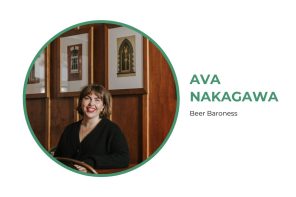Change Is Coming to How Companies Optimise Labour
By Todd Montgomery | Peter Letzelter-Smith
Imagine you’re a human resources manager of the future. Say, three to five years from now. You have a significant labour decision to make.
Working with your AI-driven labour optimisation software, you see that if you don’t give your restaurant manager a promotion within the next two weeks, the likelihood of her leaving is 72 percent. But, digging deeper, you also see there’s a 95 percent chance that a new hire—with the same qualifications—could be had for $2 an hour less.
The above scenario is how Todd Montgomery, head of the Hospitality Management Program at Oregon State University (which also offers a degree in hospitality management), sees the future. The near future, in fact, when managers will be making staffing decisions with labour optimisation software, is now on the horizon.
Talk to anyone who’s part of the hiring process in the hospitality industry, and there will be plenty of anecdotal evidence about the labour challenges facing the sector. Long-term demographic realities, the low unemployment rate, competition from higher-wage industries, and tougher immigration enforcement are combining to compel businesses to seek answers.
Montgomery’s research team specialises in conducting applied research on the labour shortage questions facing employers. One of its missions is helping to build a sustainable workforce.
One concept that has grown from OSU’s efforts is adapting revenue management (RM)—traditionally a customer-facing technique—to hospitality industry labour. “Whatever you are selling to be able to implement revenue management must be perishable. Whether it’s a piece of fruit that will go rotten or an airline seat that will fly empty, these are perishable items and revenue opportunities that are lost and won’t come back,” explained Montgomery. “The same concepts can be applied to labour. If someone is not available to serve a customer and provide that positive experience, that is also a lost revenue opportunity. It is important to understand that labour is not so different and is also perishable.”
The key concept is the relationship between value and price and devising methods to capture that dynamic accurately. Using advanced analytics, companies in recent decades have built success metrics around how customers perceive value and, with these insights, have been able to institute better pricing decisions.
Montgomery proposed harnessing those same techniques to understand how people in the hospitality industry workforce perceive value when making employment decisions. Once understood, then optimising a company’s compensation package—including hard and soft benefits, company culture, promotion structure, and other attributes that modern workers seek—can be fine-tuned to maximise an employer’s value to current and potential employees.
But this will mean facing the realities that implementing RM to workforce issues entails.
“Just like 25 years ago, when revenue management started in the hospitality industry, these same challenges exist. Lack of market-wide competitive information and lack of internal data and tools persist throughout the industry. For example, at OSU, we were asked to do a wage survey by industry last year. I went into it thinking it would be a fairly simple process. But as we dug into it, we found few employers could agree on how to calculate their hourly wage—what they included in there, whether it was benefits or other costs,” Montgomery noted. “It reminded me of the early days of revenue management when hotels rarely knew how much profit was generated by each rate because of all the built-in costs like amenities, channel commission, and so on. This is really one of the challenges that HR is going to have to overcome to better understand how to revenue manage labour.”
According to Montgomery, what lies ahead is employers needing to optimise everything—including the collection of accurate data—that goes into the value/price decisions both employees and employers make as autonomous players in the labour market. Inputs like job function, customers’ onsite experiences, compensation, work/life balance, and strategies to access labour all have to be examined and codified.
The challenges to adapting revenue management tools to the hospitality workforce crisis revolve around needed changes in both outlook and methodology. This boils down to a leadership buy-in that produces culture change and the continued development of tools for gathering and analysing data.
“We’re a traditional industry. A lot of people view labour turnover as just accepted for the industry. Turnover costs are fairly hidden, and it’s just a cost of doing business,” Montgomery explained. “Tools like benchmark data are growing. With new HR systems, there is a sophistication growing. But there is nothing like the automated revenue management software that we have out there today. For the most part, labour is done manually or via Excel.”
Montgomery stressed that the optimisation of labour is a powerful force driving change—one that will continue even if the economy softens. The app sector has allowed for innovation and idle assets being efficiently monetised in ways not possible without a certain level of tech. He cited second homes that once sat empty for most of the year now being rented via Airbnb and empty taxis that were driven continuously in search of customers before Uber.
“It is simply inevitable that labour will also be optimised. We’re just a little bit out. But when it comes, it will come in a rush. And like any disruptive technology, those not willing to adapt and innovate will be left behind.” predicted Montgomery.






